Snowden Bridge: So Dangerous That It’s Safe
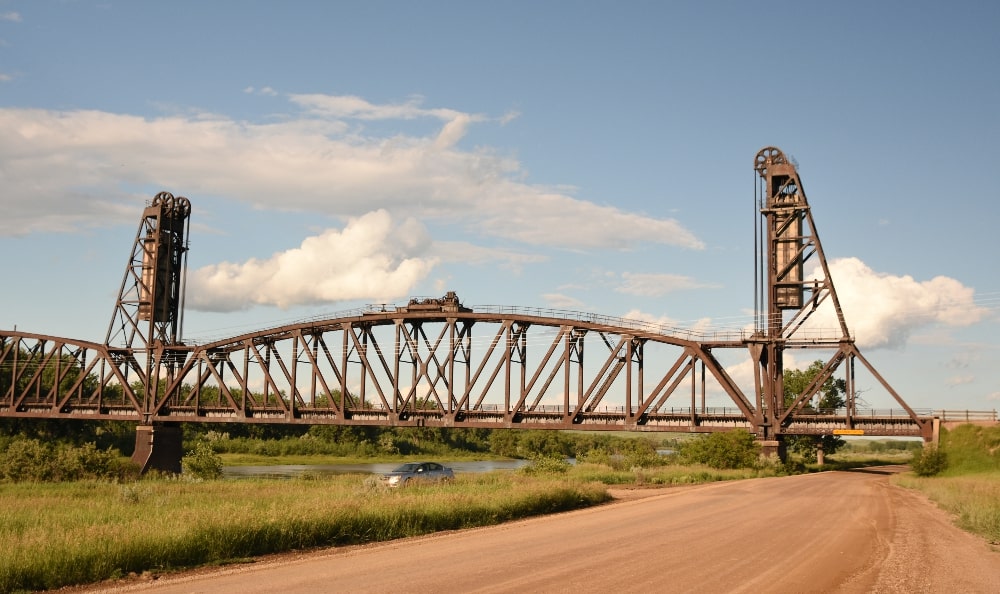
In the gently undulating plains of northeast Montana, just this side of the North Dakota line, a stately structure rises up over the Missouri River, jutting above the farmland about three miles upstream of the river’s confluence with the Yellowstone. The Snowden bridge is the only vertical lift bridge in Montana, and in a weird twist of irony, contributed to its own demise. It was obsolete almost before the workers tightened the last nut on its steel truss frame more than a century ago.
Steamships were still a viable form of moving freight at the end of the 1800s, and as homesteaders began settling what are now Richland and Roosevelt counties, visionaries could see that the ramshackle system of ferries wouldn’t be enough to serve the growing population. Enter the Great Northern Railway, which was bringing large numbers of settlers into the area. The railroad wanted to build the Montana Eastern Railway between Lewistown, Montana, and New Rockford, North Dakota, including a spur between Snowden and Fairview, opening up even more land to homesteaders. This required a pair of bridges: the Snowden bridge and its near-twin Fairview bridge which spans the Yellowstone River about 10 miles to the east. The War Department insisted that any bridge built on the lower section of these two major waterways would have to allow for steamships to pass, even though the rivers were navigable there for only a month or so out of the year.
Chicago engineer J.A.L. Waddell designed a vertical lift bridge based on the South Halsted Street Bridge in Chicago, with a single span that could be raised high enough to allow the stern wheel steamships to pass underneath. The bridge cost $465,367 to build, and when it was completed the Snowden bridge was the longest vertical lift bridge in the world. It has four steel truss spans in its 1,159-foot length, and the lift span on the southern end is 296 feet long. Two 100-foot-high towers carry concrete counterweights that are so precisely balanced the bridge required only a three-horsepower engine—smaller than the motor of an average lawnmower—to lift the 571-ton steel span. It took about 30 minutes to raise it 43 feet.
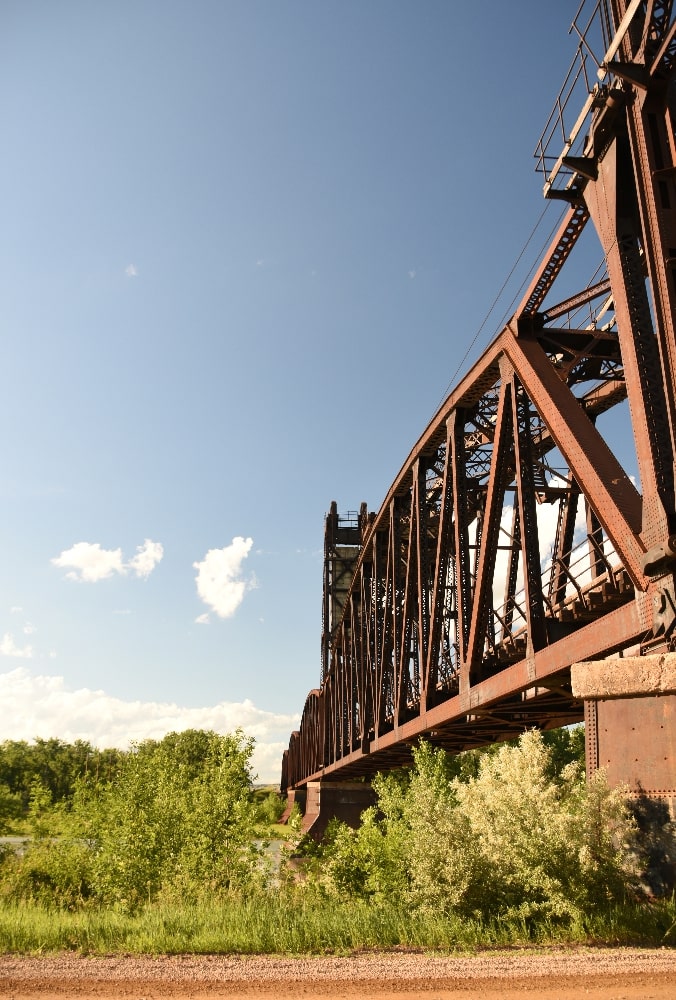
A 500-man crew, assembled by Union Bridge and Construction of Kansas City, Missouri, built a small shanty town on the Snowden side of the river, and many of the workers also found housing in nearby Mondak, about two miles downstream from the bridge site. Mondak was situated on the river hard against the North Dakota border (MONtana-DAKota, get it?), and was a popular stop for traders and ferries, including The City of Mondak, Montana’s largest steam ferry. It was also one of the most dangerous towns in northeast Montana, as its isolation and proximity to a dry state made it a magnet for trouble. Thirsty North Dakotans would stroll across the border into a Montana saloon (one of which straddled the border which was painted on the floor), where booze was legal. Not so legal were the bordellos that sprouted all over the lawless town, identified by the red lights burning in the dark. Established in 1903, the town featured three breweries, more than a dozen bars, and exactly one church. Murders were not uncommon, and more than 40 lynchings were committed in the area during Mondak’s brief heyday.
One such lynching was particularly heinous, and involved one of the bridge workers, many of whom were Black men from Missouri or nearby Fort Buford. J.C. Collins had been living in a rented shack in Mondak, and in a dispute with the shack’s owner, Collins allegedly beat his landlord’s wife with his fists. Sheriff Thomas Courtney and Deputy Richard Burmeister, both just four days into their terms with Sheridan County, responded to the call and searched for Collins at the bridge work camp. Collins opened fire on the lawmen, killing Sheriff Courtney. Burmeister died from his wounds a short time later. Collins fled into the woods near the river but was forced to surrender when a mob of townspeople tracked him down. They wanted to kill him on the spot but were convinced by authorities to allow him to be jailed in Mondak. Some time after nightfall, a crowd of people descended on the jail, doused it in kerosene and set the building ablaze. In the bedlam that followed, they broke Collins out of his cell, dragged him to a telegraph pole and hung him, firing their weapons dozens of times into the swinging corpse. Newspaper accounts of the incident mostly tell the same story, although the lack of reputable witnesses make it impossible to confirm, and different versions of the story have surfaced over the years.
As for Mondak, Prohibition took the wind out of the boozy town’s sails in 1920. No longer the county seat, it saw several government offices shut down. Frequent fires crippled the downtown area, and people steadily moved away. The final blow came in August of 1927 when John Philip Sousa’s train, carrying his band to a performance in Glendive, purportedly touched off a prairie fire in the dry summer heat. The blaze swept through Mondak, leaving just three buildings standing.
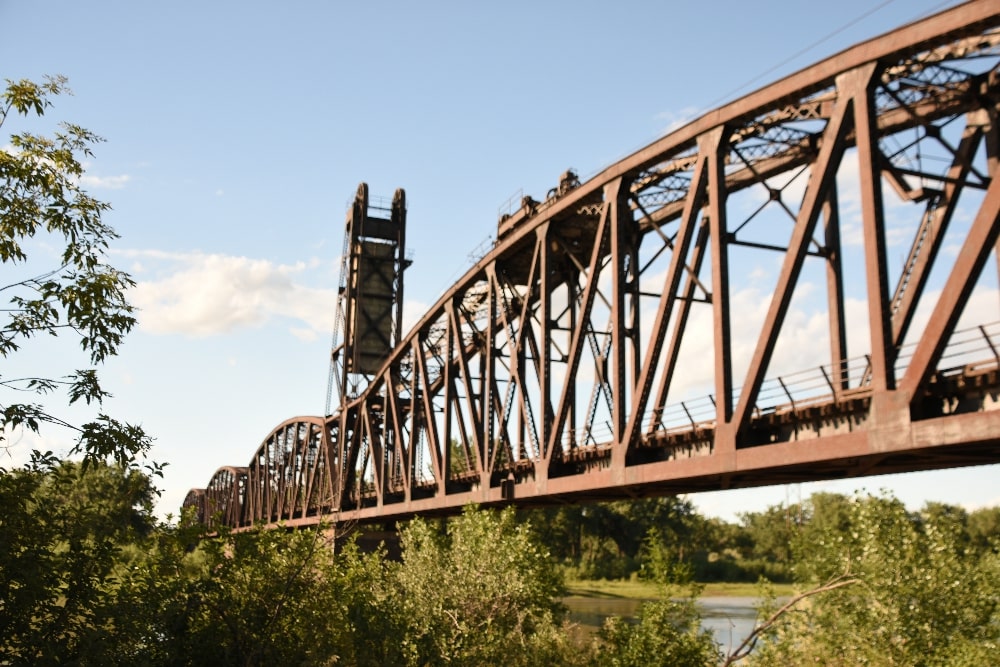
The bridge was the only permanent span crossing the river for a 700-mile stretch between Bismarck and Fort Benton, and for the first ten years or so, it was used only by trains. Half a dozen ferries still operated in the area, and a couple of pontoon bridges were built that didn’t last long before failing in spectacular fashion. Planking was eventually added to the bridge deck to allow for vehicular traffic, and workers finished just in time for the Fort Union celebration on July 18, 1925. A total of 441 cars crossed the bridge that day. Of course, the railway, which owned the bridge, began charging a toll immediately. Toll prices were set by the War Dept., starting at 15 cents a head for horses and cattle, 25 cents for pedestrians, 50 cents for a car and driver (male passengers were extra), all the way up to 75 cents for motor buses and teams of two or more horses.
While the people working the farms and ranches around Snowden, Bainville, Fairview and other little towns were enjoying the benefits of the new railroad spur, unrest was rippling through Sheridan County to the north. Farmers already struggling through the drought were also being crushed by rising railroad shipping prices, predatory financing on equipment loans, and ballooning wartime costs on food and supplies. They organized, and with the help of the Nonpartisan League from North Dakota, started to have some influence in local politics. Their goal was a communist system in the region, that would offer state-owned grain elevators, mills, even banks. The communist movement of Sheridan County in the early 1900s was an anomaly in Montana, an atheist-tinged uprising amidst a traditionally religious populace. The War Dept., whether flexing some military muscle toward the end of the First World War, or feeling the threat of creeping communism, posted armed guards at the Snowden bridge in April of 1917. The local press was only too happy to fan the flames of paranoia. “This bridge is an important piece of railroad construction, and should it be blown to bits by war spies of the enemy it would seriously affect traffic on the main line of the Great Northern,” opined the Glasgow Timeson May 11, 1917. By the time FDR was elected in 1932, the radicals had been chased off or simply lost interest in the revolution.
The Snowden bridge has been a significant element not just in northeast Montana’s history, but in the personal lives of the area’s denizens as well. Ralph Chase’s parents arrived in Mondak in 1911, and his father got a job driving passengers and mail from Mondak to Sidney. He has vivid memories of the bridge’s construction. “I can remember going for a Sunday ride with my folks and seeing the shack town and the steel work for the bridge, all laid out on the north side of the river.”
Montana poet and storyteller Philip Burgess has written several books that feature stories from his youth on the family’s ranch some three miles west of the bridge. He attended the tiny schoolhouse in Nohly, almost in the shadow of the massive structure. Some evenings, when the grown-ups were involved in a PTA meeting, Burgess and his friends would turn the bridge into a jungle gym, climbing all over it. “At night the kids would run wild,” he recalls from his home in Missoula. Some had enough guts to scale the hundred-foot towers. “I did that more than once. Believe me, you took a good, sound grip on that ladder. Then when you got up there, there was a platform you could stand on.” Imagine the view a kid would have of his surrounding world, perched ten stories above the big river that flows through his life. For most of the families that ranched and farmed the wedge of land between the two great rivers, the bridge was a big part of their lives, something they could count on to always be there.
Sadly, the effort, time and expense that went into building this glorious structure was deemed unnecessary pretty much the day it was finished. When the railroad arrived in the area around 1900, the speedy and efficient mode of transportation effectively sealed the fate of the steamship era, which was already in its death throes on the Missouri. The last commercial load of freight was taken by the F.Y. Bachelor to Fort Benton in 1889. Smaller boats and ferries did continue to move through the lower Missouri, but by 1910 it was clear that the railroad was king. The lift deck on the Snowden bridge was raised once as a test in 1913, then only a few times after that. In all, it was lifted only 16 times in 22 years. It became such a hassle to lift the span that bridge tenders would sometimes persuade the captain of a passing barge to take on water until the craft rode low enough to slip under the bridge. The railroad retired the lift machinery and permanently secured the lift span in 1943.
Trains, cars and pedestrians shared the bridge until 1985, when the MonDak bridge was completed just over the border in North Dakota. Incredibly, even though bridge traffic was always one-way, no serious incidents were ever reported. A 1981 DOT study found that the bridge “was so dangerous that it was safe.”
Today the bridge still sees an occasional train on its short siding line, but is closed to cars and pedestrians. It is elegant in its simplicity, solid and silent in the sparsely populated countryside of this wide open, fertile corner of Montana. The Snowden bridge stands as a testament to American ingenuity, and also as an example of how that ingenuity can be tripped up by its own ambition.
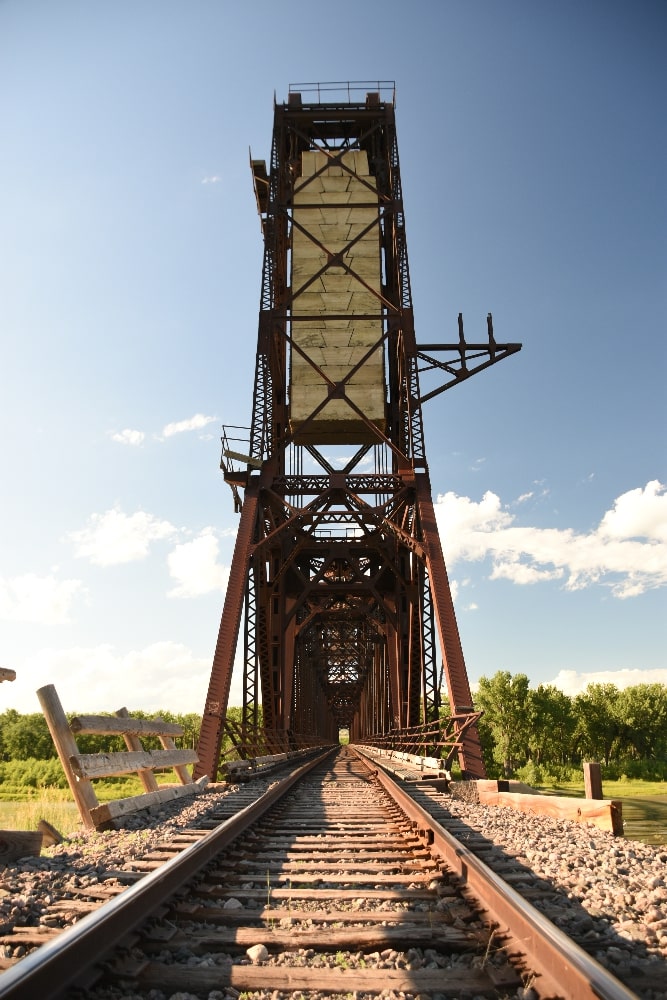






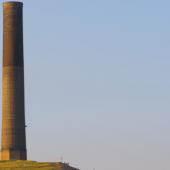




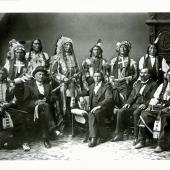
- Reply
Permalink